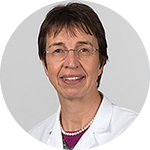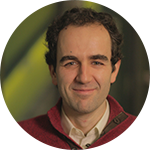-
Gentle sound waves
-
Ultrasound instead of x-rays: a new technology is being developed to measure women’s breast density painlessly and without radiation in order to detect breast cancer. Student Franziska Müller* has already benefited from it as part of a study conducted at University Hospital Zurich.
-
 «I now know that I need to go in for regular examination.»
«I now know that I need to go in for regular examination.»The 22-year-old Franziska Müller recently found out that she has dense breast tissue. Her breasts have a high degree of glandular and connective tissue, but little fatty tissue, meaning that she is at greater risk of developing breast cancer. Franziska Müller discovered this during a study conducted by Professor Marga Rominger at the University Hospital Zurich Institute of Diagnostic and Interventional Radiology. She is now testing a new, visionary method for measuring breast density and detecting breast cancer: ultrasound.
Mammographies have mostly been used for breast cancer screening, but they are only used for women aged 50 and older because they use x-rays. This makes the early assessment of breast cancer risk in young women difficult. But this is important for prevention.
The new ultrasound method developed by ETH Zurich and University Hospital Zurich might change this. It involves using a normal ultrasound device in combination with a new type of measuring instrument that measures the speed of the sonic waves reflected by the breast tissue. Hence the name of the technology: Speed-of-Sound (SoS). It can be used to measure breast density and also detect breast cancer.
The method has numerous advantages over conventional mammography: it is radiation-free, painless and makes it easier to differentiate between benign and malignant tumors. The examination technology is also inexpensive and might also be used in developing countries. “The SoS method could ultimately end up replacing mammography in many cases,” Marga Rominger says with confidence.
The project has already received multiple innovation awards. Thanks to a donation made by entrepreneur Hans-Peter Wild to the University Hospital Zurich Foundation, Marga Rominger can now begin testing the method in clinical trials. Student Franziska Müller is grateful that she has already been able to benefit from the study: “I now know that I need to go in for regular examinations.”
*anonymized
-
100% financed

-
-
Project management
-
-

Dr. med. Marga Rominger
Head of Ultrasound
Institute of Diagnostic and Intervention Radiology
University Hospital Zurich -

Dr. Sergio Sanabria
Physicist
Institute for Diagnostic and Interventional Radiology
University Hospital Zurich
-
-
Supporting partner
-
-
Dr. Hans-Peter Wild
